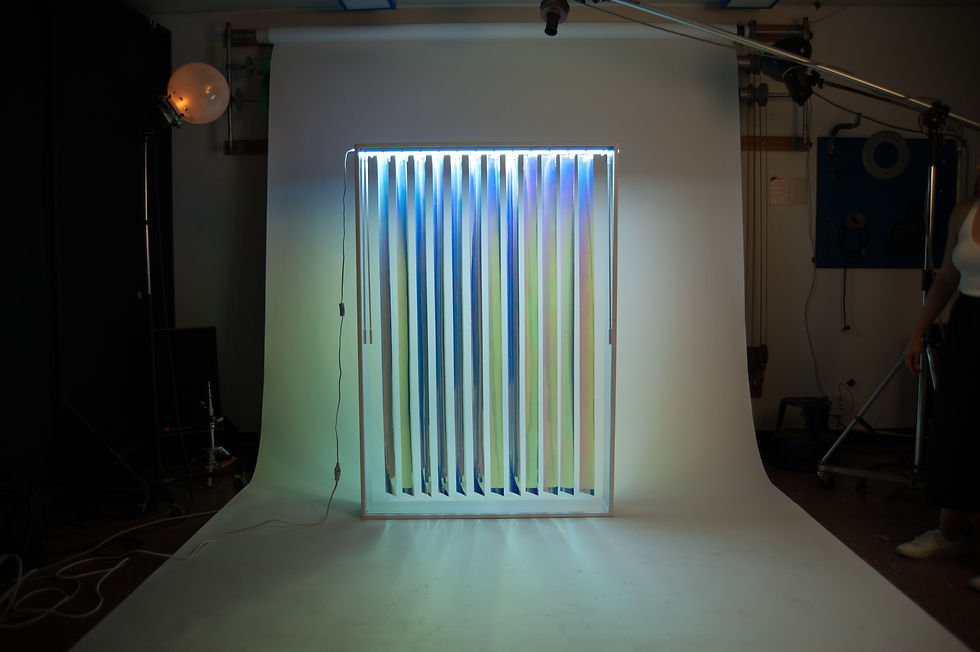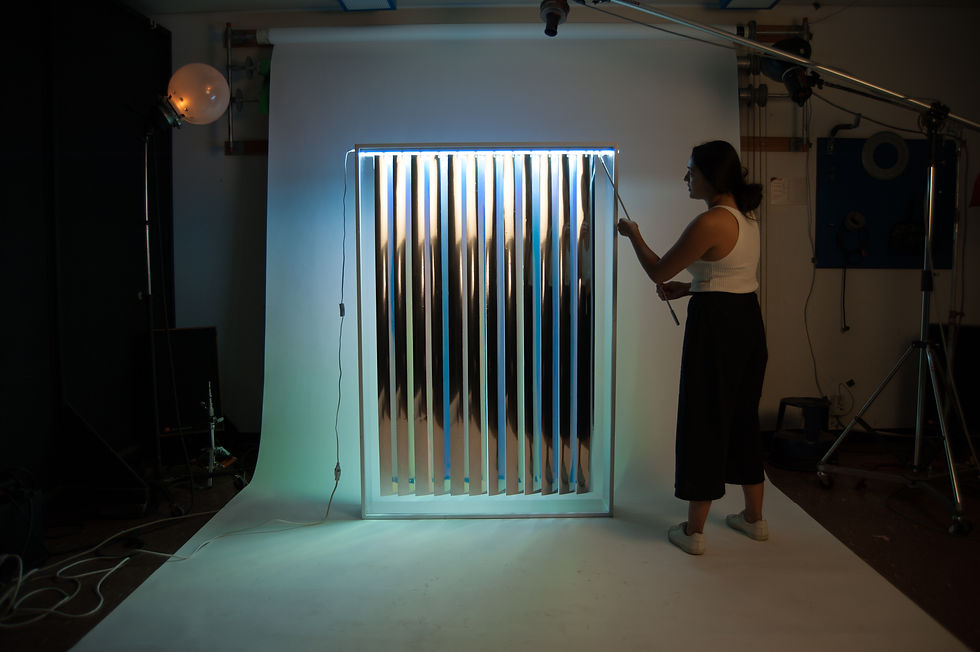
Vellum : Chimera
Fall 2018
Studio Lange
Chimera
Chimera is a piece that mimicked the imagination. Since the imagination is based on reality the piece reflects the existing environment and the viewer or viewers that is seeing the piece. By including the viewer in the reflection, the viewer becomes a part of the piece. The imagination uses reality as a starting point but changes as the person who is doing the imagining defines it. Perhaps a person is shown or described a city. The person’s starting point for imagining it will be a normal city that perhaps they have visited or seen. But as they are described more about it, the city changes. Chimera starts off as a mirror or reflection of reality, but as the viewer changes the understanding of the image changes as well.
The vellum piece created a chimera. A chimera is a thing that is hoped or wished for but in fact is illusory or impossible to achieve. It can also be described as a figment of one’s imagination. The images created by the piece become their own chimera. Through a reflective material on the blinds, people can see a reflection of themselves and their environment on the piece. People can then interact the blinds and use a mechanism to turn them. As the blinds turn the reflection changes. The reflections capture different colors that is emitted from the piece as well as views from different angles. The piece morphs reality as it changes the seen image.
Vellum Show
Given a small white closet the piece became it’s own experience. The vellum show created interactions in which the spectators were able to change their reflections while also changing the space itself. Since the piece was alone in the closet the room became a part of it, creating a small installation within the furniture show. This installation was observed during the opening night of vellum. It was observed that there were elements of curiosity, surprise, and wonder in the spectators.
People are also fascinated with the imagined. Our minds and bodies naturally react to stories and fiction although they don’t exist in reality. The paradox of fiction has been studied and questioned by philosophers. People often feel emotions for fictional characters and to feel emotions for something, it is argued that you have to believe it exists. Fiction has the ability to create emotions and create reactions in people.
The imagined can bring joy, fear, anger, or other emotions in someone engaging in the act of imagining or experiencing another’s imagination in reality. The imagination produces strong feelings in most of us just as fictions do. It is the imaginative engagement with a fiction that allows fiction to move us. It is a truth known that fiction can produce feelings but there is a confusion in why this happens. Philosophers have tried to rationalize real feelings for an unreal thing with different reasonings.
A Shared Experience
The piece engages people through sharing perspectives. People on both sides of the vellum piece come in and out of the view as the blinds rotate. There is a control on both sides of the piece. This enables a person on each side to have an input on what is being viewed and experienced. The piece focuses on multiple points of view.
Shared imagination engages fully with the material world. Everyone has their own imaginative landscapes, populated with very particular experiences. Through art and other new invention people can connect their own imaginations. The vellum attempts to mimic the action of sharing the imagination by allowing both users to share and morph their views.

























